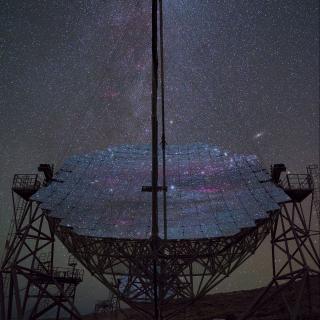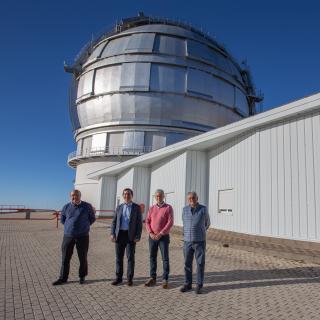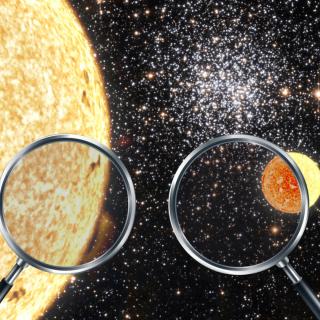
Scientists from the MAGIC collaboration, using a system of two 17m diameter imaging air Cherenkov telescopes located on the Canary Island of La Palma, Spain, have detected very high energy gamma-rays from a recurrent nova in the Milky Way. This event is the first one that has been detected at such energies and may provide new insight into this class of eruptions, and the potential role they play for producing the mysterious highly energetic cosmic rays that permeate the Milky Way. The researchers present the results of their observations and insights they gained into this type of stellar
Advertised on



![Young Stellar Population distribution The left panel shows the young stellar population (YSP) distribution overlaid with contours showing the advancing side (blue) and receding side (red) of the outflow. The right panel shows the same but with contours of W80 (i.e. the width of the 5007 [OIII] line).](/sites/default/files/styles/crop_square_2_2_to_320px/public/images/news/ysp-wcont_f.jpg?h=4336e403&itok=AnitfTe8)
